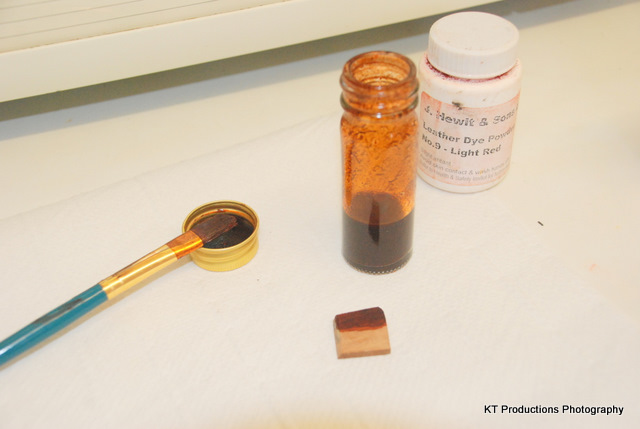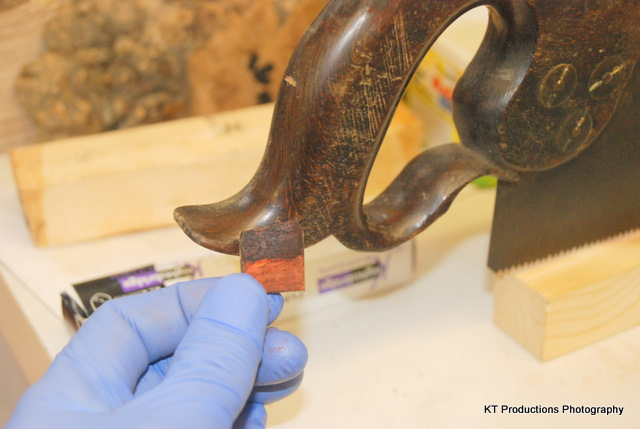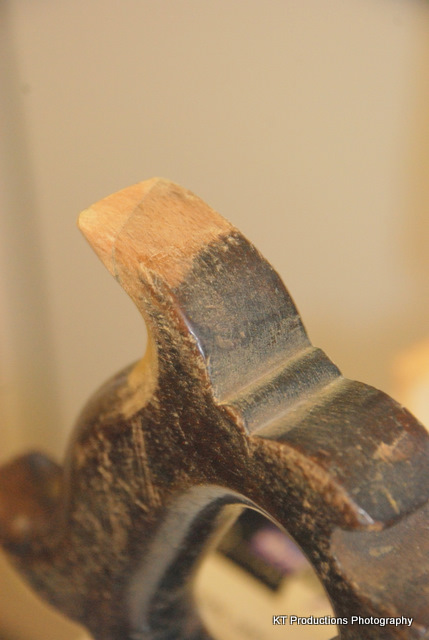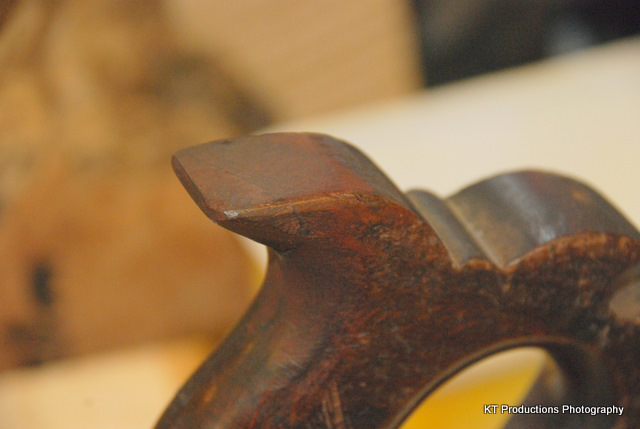Sheffield Tony
Ghost of the disenchanted
I have just acquired a largish wooden plane by Sims of London. It is about 26" long,with a 2 3/8" wide iron. I bought it on a whim to have a go with a larger woodie.
The bad news is that the carrier managed to screw up badly, and burst the packaging, losing the wedge. All the other bits made it though. Condition wise, it has been adjusted rather heavy handedly and had some heavy hammer dings on both ends. It looks like the wood has moved a bit and there is some cracking along the grain of the plane body. There are also maybe half a dozen worm holes. The iron has some pitting, but it looks avoidable by strategic grinding back.
So, what to do with it ? I could:
Make a new wedge (suggestions how to blend it with the patina of the plane would be much appreciated)
Grind back the iron to clean metal
Treat the wormholes
Squeeze glue into the cracks
Check/flatten the sole, if themovement has affected it,
- and attempt to use it, or:
Take a large crosscut saw, make three cuts, put it in the stove and keep warm for an evening, saving the irons for a future project.
Or more likely, the third way - leave it on a shelf for a while whilst I consider/forget it. Any suggestions ?
The bad news is that the carrier managed to screw up badly, and burst the packaging, losing the wedge. All the other bits made it though. Condition wise, it has been adjusted rather heavy handedly and had some heavy hammer dings on both ends. It looks like the wood has moved a bit and there is some cracking along the grain of the plane body. There are also maybe half a dozen worm holes. The iron has some pitting, but it looks avoidable by strategic grinding back.
So, what to do with it ? I could:
Make a new wedge (suggestions how to blend it with the patina of the plane would be much appreciated)
Grind back the iron to clean metal
Treat the wormholes
Squeeze glue into the cracks
Check/flatten the sole, if themovement has affected it,
- and attempt to use it, or:
Take a large crosscut saw, make three cuts, put it in the stove and keep warm for an evening, saving the irons for a future project.
Or more likely, the third way - leave it on a shelf for a while whilst I consider/forget it. Any suggestions ?














